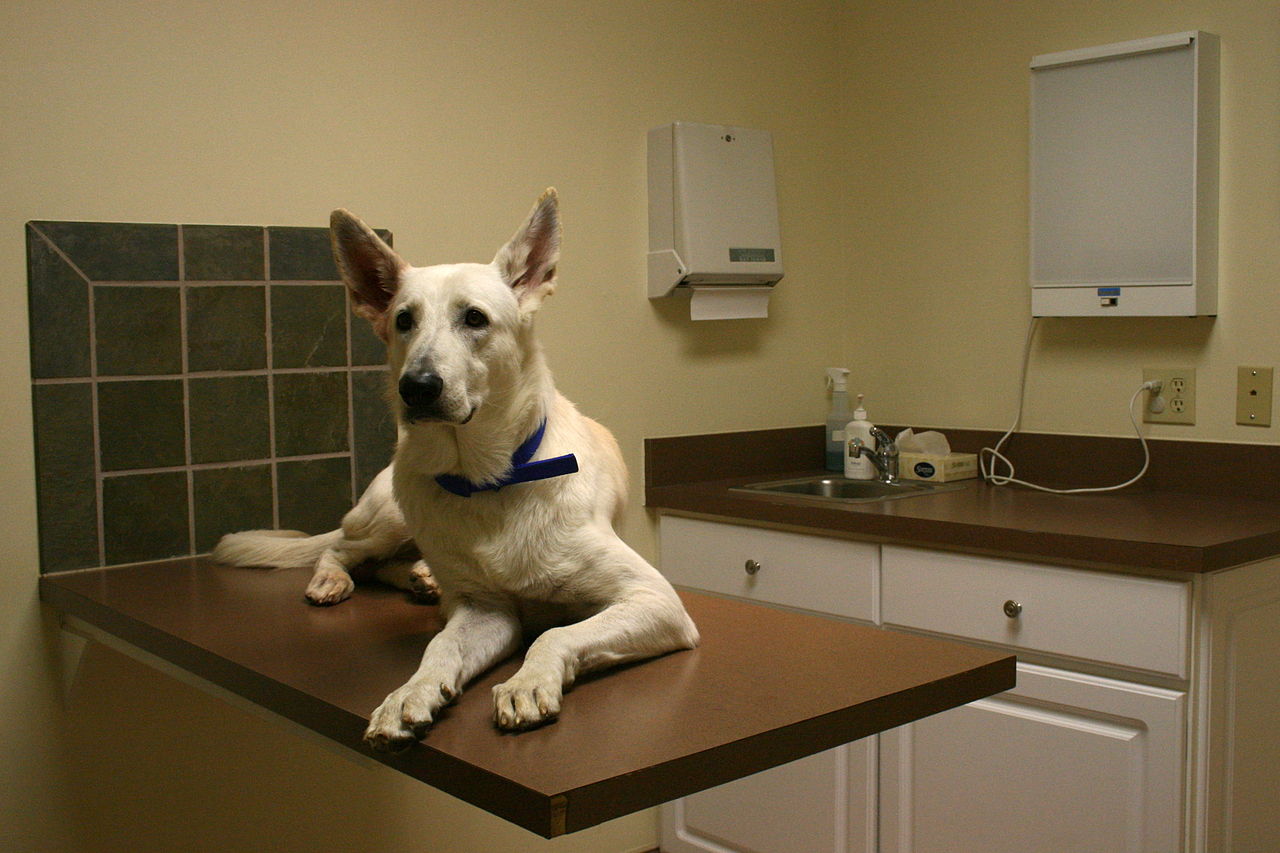Both dogs and cats butt their heads and rub against us when looking for food or attention or just to show love. But head pressing is a different behavior. If you see your dog or cat pressing the top of the head against furniture, walls, floors or any hard surfaces for no discernable reason, it […]
Dog Diseases
There are a number of diseases dogs are prone to and I’ll talk about some of them here. I’ll also try to include specific breeds of dog that are prone to certain illnesses and diseases.
I would advise you to be aware of your dog’s normal behavior. Signs of illness can be lack of appetite, decreased activity, weakness, not drinking much, not grooming, bad breath, sleeping more than usual, drooling, vomiting, diarrhea, coughing, trouble breathing, frequent and/or bloody urination. If your dog exhibits any of these symptoms or any behavioral changes and you are unsure of what to do, seek the advice of your veterinarian.
Things you need to know:
The normal color of a dog’s gums is pink. Pale, white, blue or yellow gums, contact your vet at once.
Normal temperature for a dog is 100-102.5 degrees Fahrenheit. Less than 99 degrees or over 104 degrees, contact your vet immediately.
A dog’s heart rate slows and speeds with each breath. This is not abnormal. You can check the heart rate by finding the femoral artery inside the back leg. Small dogs and puppies heart rate is 120-160 beats per minute. Dogs that are about 30 lbs. have a rate of 60-120 beats per minute. The larger the dog, the slower the heart rate.
A dog’s normal respiration rate is 10-30 breaths per minute. Panting can be up to 200 pants per minute.
To check if your dog is breathing, hold a tissue or mirror up to his nose. If there is movement or breath on the mirror, your dog is breathing, but get him to the vet immediately.
Problem signs are using the abdominals to breathe, gasping, loud noises, shallow breaths, difficulty exhaling. Call your vet immediately.
If you have any questions, I’ll be happy to answer them.
Note: Many new pet owners do not know about the availability of pet health insurance. Insurance for your dog is a great safety net to have for unforeseeable emergencies or illnesses. It is also helpful in covering routine shots and exams. Some plans start at just five dollars a month. To compare pet insurance plans in your area check out the link above.

Heart Murmur in Dogs
The heart is comprised of 4 chambers. The upper is called the atria (plural) and the lower are the ventricles. Blood flows into the right atrium (singular), then is pumped into the right ventricle. The right ventricle continues the flow, pumping the blood into the lungs where it receives oxygen. From there, it flows into […]

FDA-New Approved Treatment for Hypothyroidism in Dogs
2016 What is hypothyroidism? Hypothyroidism occurs when the thyroid gland doesn’t produce and secrete enough thyroid hormones. The thyroid gland is located in the mid-neck region near the voice box (larynx). In dogs, the thyroid gland is made up of two separate lobes that lie on either side of the windpipe (trachea). Thyroid hormones play […]

Cerebellar Hypoplasia
Cerebellar Hypoplasia is a disorder occurring in cats and dogs in which the cerebellum is not completely mature at birth. Signs of the disorder are usually seen immediately at birth in cats but may become noticeable in dogs at about 2 months old. There is a related condition called cerebellar abiotrophy in which symptoms are […]

Lymphoplasmacytic Rhinitis in Canines
Lymphoplasmacytic Rhinitis (LPR) is the most common inflammatory disease in dogs. With LPR, the mucosal lining of the nasal passages become inflamed. Diagnosis is difficult as this is an idiopathic (of unknown origin) disease. Its causes can be varied and may include airborne allergens, nasal irritation through viral or bacterial infections, fungal irritants, immune-mediated, tumors […]

Esophagitis in Dogs and Cats
Esophagitis is the inflammation of the esophagus which is the tube that carries food and liquid to the stomach. Aspiration pneumonia (inhalation pneumonia) is a complication of esophagitis. It can occur when your pet is unable to swallow food or liquid which are inhaled into the lungs causing inflammation and infection. Most often the cause […]

Brain Tumors in Pets
Brain tumors usually occur in older animals. They are more common in dogs than in cats. These tumors often metastasize from other cancers in the body. The most common brain tumor is called meningioma. It is slow-growing and gets its name from the meninnges, a membrane which covers the brain and spinal cord. Other types […]

Vetoryl for Cushing’s in Dogs
October 2015 The FDA (Food and Drug Administration) had approved a drug to treat Cushing’s Disease in dogs in 2008. The FDA states that Vetoryl (trilostane) is the only drug approved by them to treat both pituitary-and-adrenal dependent Cushing’s in dogs. Vetoryl stops the production of cortisol in the adrenal glands. Cushing’s Disease occurs when […]

Hypothyroidism in Dogs
Hypothyroidism is one of the most common ailments in dogs. It is caused by a deficiency of thyroid hormones. Hypothyroidism is an auto-immune disease in which the body sees the thyroid gland as a foreign threat. The dog’s thyroid gland is divided into 2 lobes, butterfly shaped, which are on either side of the trachea […]

Water Toxicity in Dogs
It’s hard to believe, but your dog can actually drink too much water. Water intoxication, while rare, can cause hyponatremia, a condition which can be life-threatening due to low sodium levels. Playing in the water for long periods, drinking from hoses and sprinklers too long can be hazardous to your dog. When too much water […]
